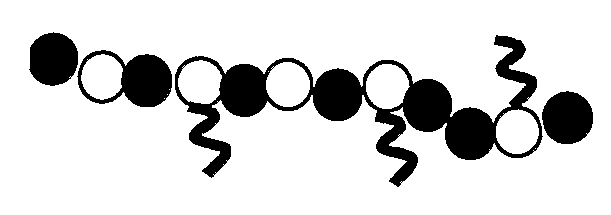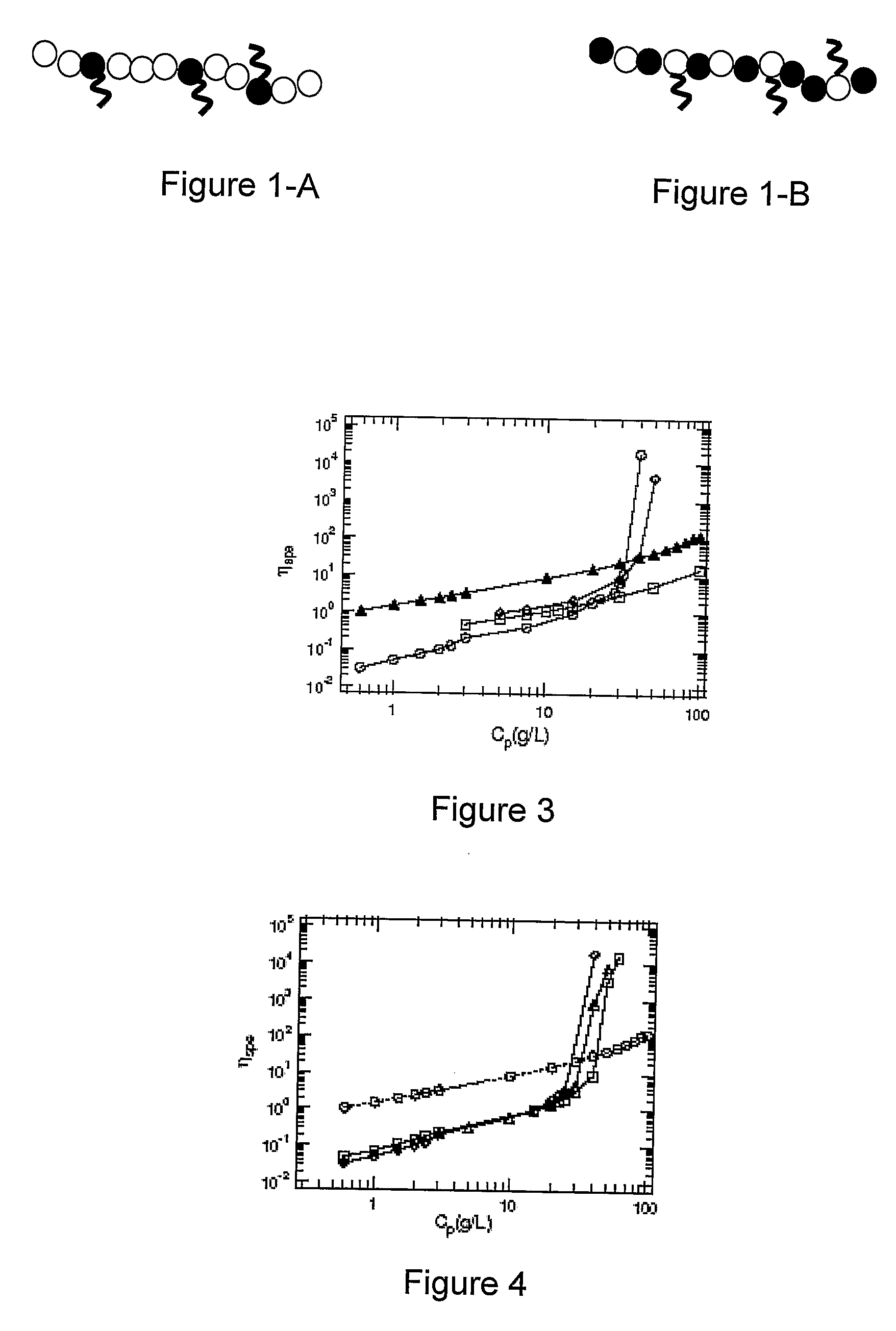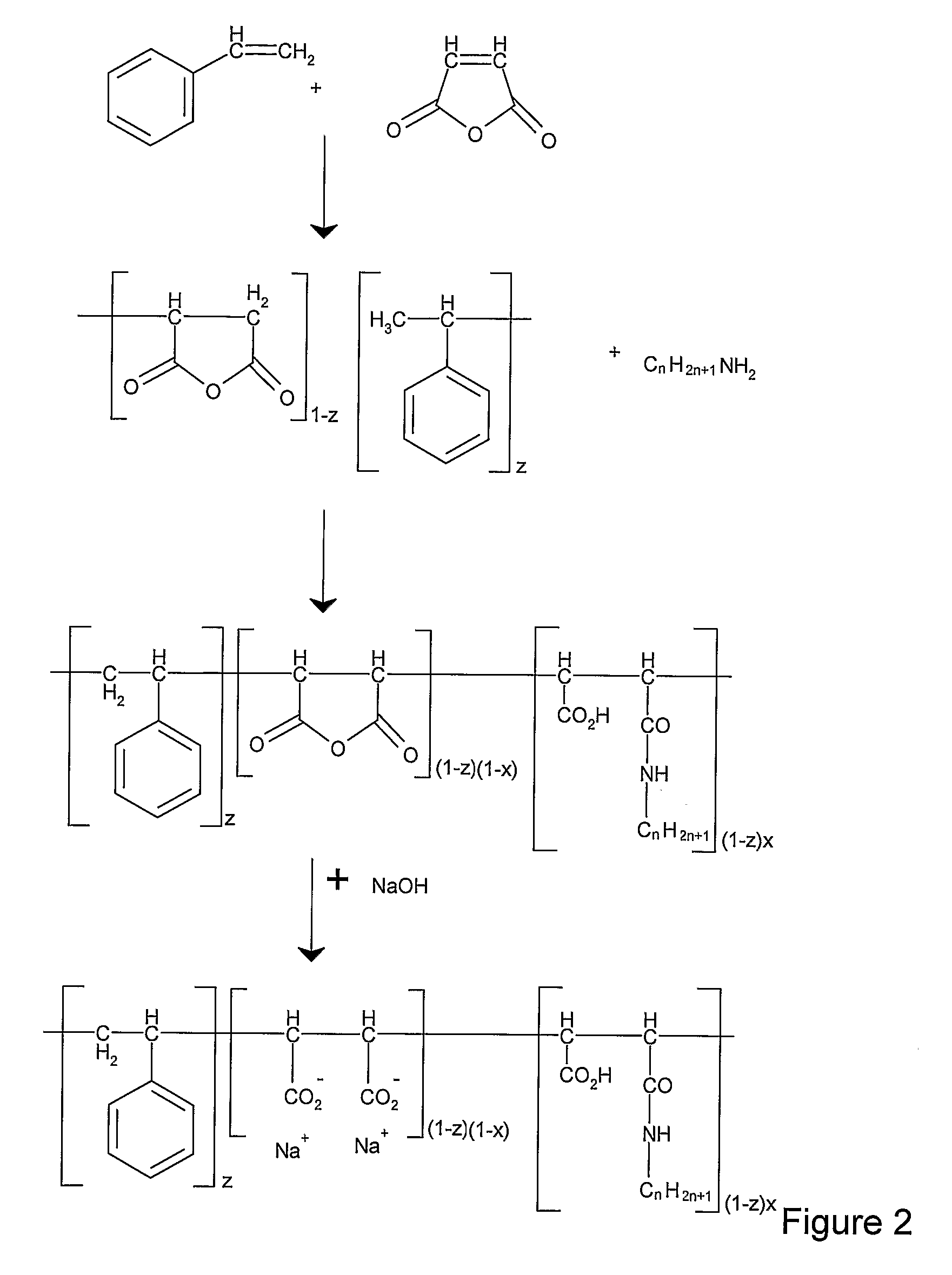Anionic Amphiphilic Copolymers And Solutions Comprising Thereof
- Summary
- Abstract
- Description
- Claims
- Application Information
AI Technical Summary
Benefits of technology
Problems solved by technology
Method used
Image
Examples
Embodiment Construction
[0018]Usually, amphiphilic polymers backbones are mostly hydrophilic with local hydrophobic units as schematized FIG. 1-A where the open circles represent hydrophilic monomers; the full black circles hydrophobic monomers and the scribbly line represent grafted alkyl groups. With the polymers according to the present invention and schematized FIG. 1-B, the backbone consists mostly of hydrophobic groups with a limited amount of hydrophilic units and charges to achieve solubility.
[0019]The polymers according to the present invention are terpolymers based on combination of a first and second type of hydrophobic groups and of anionic charged groups. Two types of anionic charged groups have been studied: carboxylates and sulfonates groups.
Synthesis of Carboxylated Terpolymer
[0020]FIG. 2 illustrates the main steps of a method to prepare carboxylated terpolymer according to the invention. First a copolymer styrene and maleic anhydride acid (SMA) is obtained. The synthesis was performed with...
PUM
| Property | Measurement | Unit |
|---|---|---|
| Fraction | aaaaa | aaaaa |
| Fraction | aaaaa | aaaaa |
| Fraction | aaaaa | aaaaa |
Abstract
Description
Claims
Application Information
 Login to View More
Login to View More - R&D
- Intellectual Property
- Life Sciences
- Materials
- Tech Scout
- Unparalleled Data Quality
- Higher Quality Content
- 60% Fewer Hallucinations
Browse by: Latest US Patents, China's latest patents, Technical Efficacy Thesaurus, Application Domain, Technology Topic, Popular Technical Reports.
© 2025 PatSnap. All rights reserved.Legal|Privacy policy|Modern Slavery Act Transparency Statement|Sitemap|About US| Contact US: help@patsnap.com



